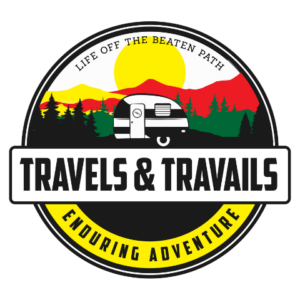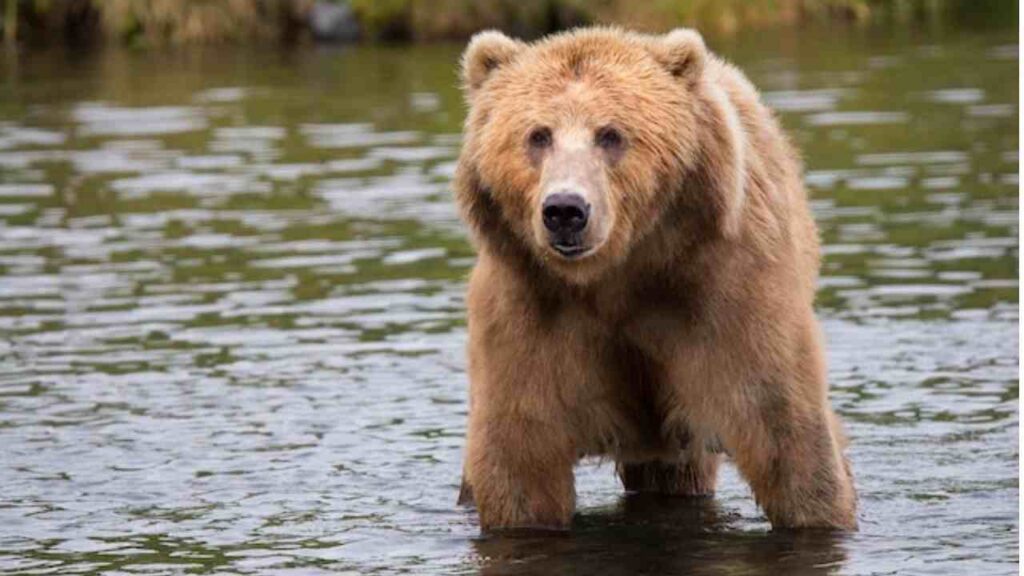
Yellowstone National Park between Idaho, Montana, and Wyoming (which has the lion’s share) is a park that spans almost 3,500 acres. There’s nothing but you, the open wilderness, and the wildlife that lives here. Which is considered the most dangerous animal in Yellowstone?
There’s not just one dangerous animal in Yellowstone, but several. They include:
- Grizzly bears
- Wolves
- Prairie rattlesnakes
- Cougars
- Moose
- American bison
In this informative guide, I’ll discuss why these animals are dangerous, how plentiful they are in Yellowstone, how to avoid them, and what to do if you ever spot one. This information could just save your life, so make sure you give it a read!
1. Grizzly Bears
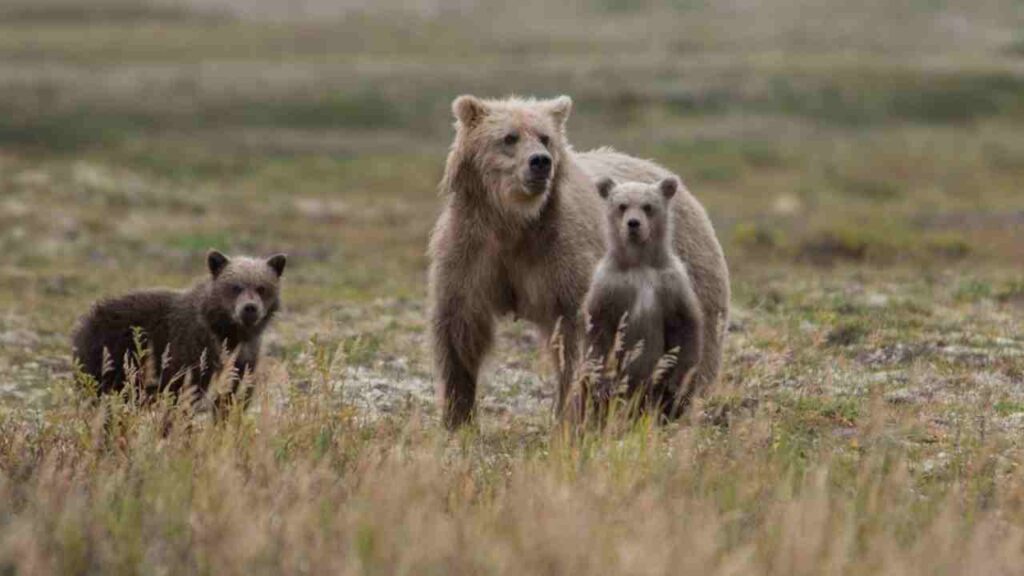
At the top of the list is an animal that everyone can agree is dangerous, the grizzly bear.
Grizzlies are mean, ferocious, and imposing, making them a terrifying triple threat that can derail your trip to Yellowstone in a hurry.
According to animal resource PetKeen, from 1979 to 2022, 44 grizzly bear attacks happened at Yellowstone. Only eight lead to fatalities.
How Plentiful Are They at Yellowstone?
Grizzly bears are quite numerous throughout the thousands of acres that comprise Yellowstone National Park.
The National Park Service estimates that, in 2019, the park was home to 728 grizzly bears.
What to Do If You See One
Grizzly bears don’t attack humans over nothing. If the animal feels like its cubs are being threatened, that’s when human attacks are more likely.
That’s also the case when you encroach on what they perceive as their territory.
Thus, being too close to a bear is one of the worst things you can do. You’re going to anger the grizzly, and you’re also in close range for an attack. It’s bad news all around.
Standing nice and still might cause the grizzly to walk off. Lying down and playing dead also works.
The reason why these tactics are effective is that the grizzly bear perceives you as a threat. By not moving, they shouldn’t feel threatened and will likely move on.
If the bear does not move on, then you need to wave your arms but do it slowly. Avoid eye contact as well.
Don’t yell, move erratically, or try to run. Those actions will make you threatening in the bear’s eyes.
Instead, wait for the grizzly to turn around and then slowly walk away. You can even back away but take care not to trip.
2. Wolves
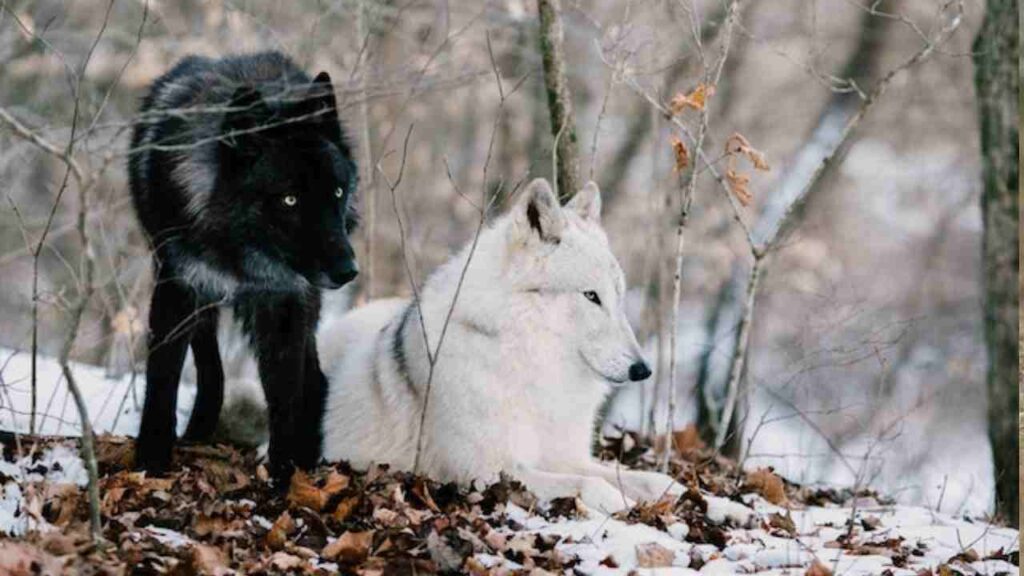
Another viable threat to be aware of when vacationing in Yellowstone is the wolf.
Wolves are crepuscular. This means that they are active during two periods of the day, dusk and dawn.
That said, you can see wolves during the day as well as at night, so it’s always good to be on alert.
I couldn’t find instances of wolves killing humans at Yellowstone; more the other way around. That said, you can never be too careful!
How Plentiful Are They at Yellowstone?
After all, the NPS estimates that, as of 2015, Yellowstone was the home of 528 gray wolves.
In 2021, the number of wolves living in Yellowstone is at least 95 with eight packs identified.
Wolves aren’t as plenteous as grizzly bears but are still a threat.
What to Do If You See One
Although wolves look like dogs, they are very much not dogs.
That said, people treating wolves like dogs and feeding them has caused wolves to habituate, meaning they don’t fear humans.
Like bears, wolves will attack if you get too close to a den of pups or if you try to feed a wolf, so never, ever do that.
You should remain calm and resist the urge to run. Instead, stand as tall as you can so you look bigger and more imposing.
You do want to make eye contact with a wolf, as it can help you establish dominance.
Keep your eyes locked on the wolf’s the entire time. If they break eye contact, that’s fine, but you should not.
When it’s safe to, begin to slowly back away but do not cease making eye contact. Walk backward, as you never want to turn your back on a wolf.
Even when you feel like you’re safe, keep walking. Do not run.
3. Prairie Rattlesnakes
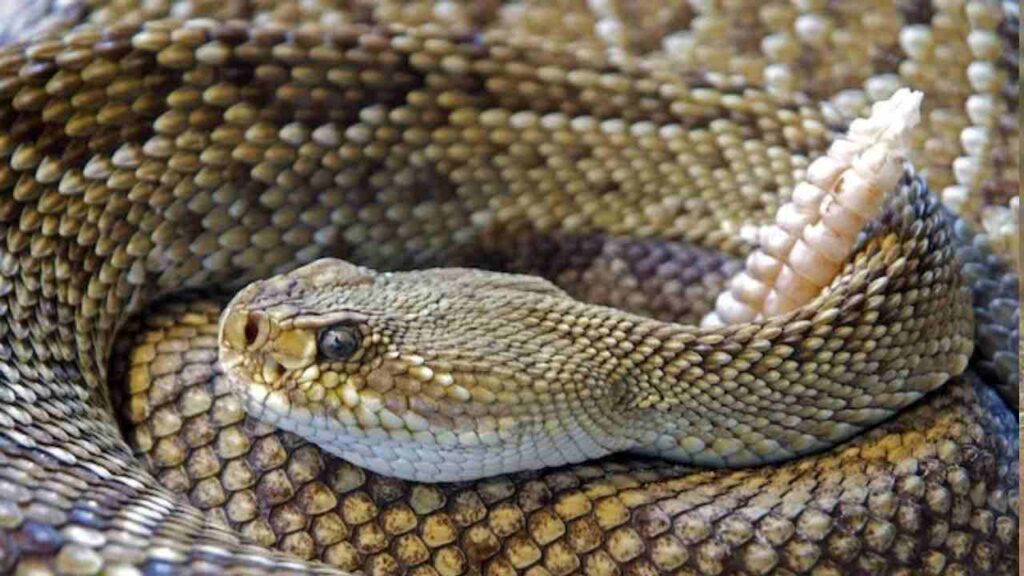
Next is an animal of a different nature known as the prairie rattlesnake.
Prairie rattlesnakes are very common in many parts of the United States. The snake is named due to its coloration, which does indeed resemble the prairie and can blend right in with dusty or sandy environments.
That said, the snake might sometimes have coloration such as dark brown, yellow, green-brown, or olive green as well as white borders. The prairie rattlesnake is about 48 inches long but can be bigger.
While Yellowstone houses many snakes, the prairie rattlesnake is the only one that’s venomous.
That said, I was unable to find any statistics of prairie rattlesnake-caused deaths at Yellowstone, so there is that.
How Plentiful Are They at Yellowstone?
I also couldn’t track down any data on the precise number of prairie rattlesnakes in the park.
The NPS notes that the most frequent areas to spot these snakes are around Rattlesnake Butte, Stephens Creek, Reese Creek, and other lower areas of Yellowstone, so that should help.
What to Do If You See One
Since it can be hard to discern between a venomous prairie rattlesnake and any other kind of snake in Yellowstone, you should treat all snakes the same and be wary.
The NPS notes that the prairie rattlesnake is often defensive instead of aggressive. Thus, avoid provoking the snake or encroaching upon its territory. If the snake feels threatened, it will attack.
Although it’s tempting, you should not use rocks, sticks, or any other nearby item as a weapon to combat the prairie rattlesnake. Then you could very likely be bitten.
Instead, leave the snake alone. Keep a distance of five feet and remain as calm as you can.
If you’re bitten, you need to contact 911 immediately. Remember, prairie rattlesnake bites are poisonous, which means they could be fatal.
4. Cougars
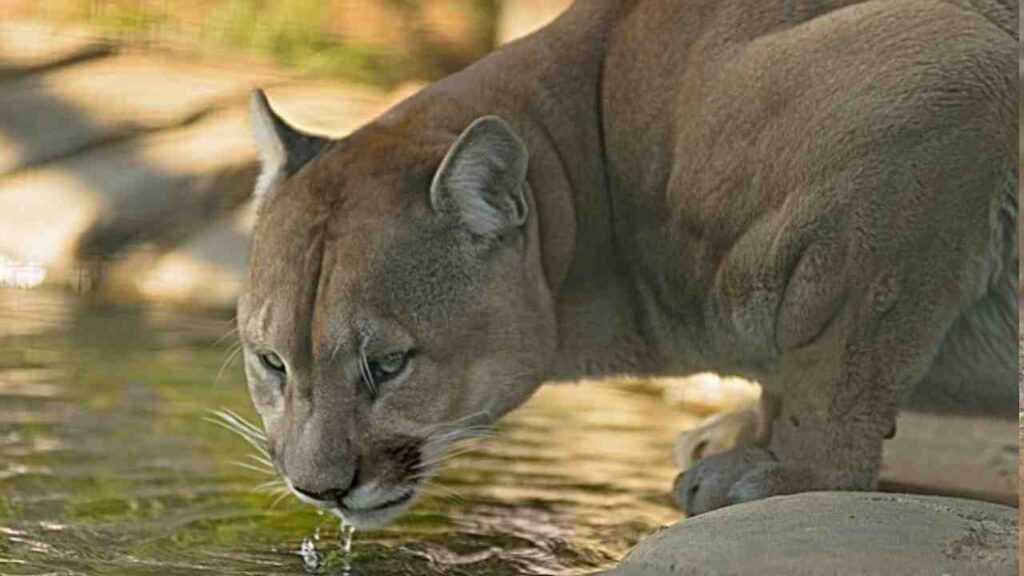
Very dangerous as well are the cougars living amongst the wilderness throughout Yellowstone National Park.
Most of the stats I could find were about hunting cougars, but don’t be mistaken. Cougars will eagerly hunt humans right back.
The sizeable paws of a cougar allow this animal to achieve dizzyingly fast speeds of 40 to 50 miles per hour on foot. Cougars can also jump 18 feet into the air.
You cannot outrun or outjump a cougar, so safety must be your top priority.
How Plentiful Are They at Yellowstone?
The NHS estimates, in a late 2020 report, that between 34 and 42 cougars lived on the Yellowstone grounds, mostly across the park’s northern area.
What to Do If You See One
What motivates a cougar to attack a human? Sometimes, cougars simply perceive humans as prey.
In other instances, stepping onto the cougar’s territory can inspire attacks, as can hunger if the cougar’s food chain is interrupted.
If you see a cougar, never run. You’ll recall that the big cat can outrun you, and I cannot stress this enough. You will be run down.
Try to make yourself look as big and imposing as possible. Stand up tall and put your arms out.
Stay where you are and under no circumstances should you get any closer to the cougar than where you’re already standing.
As is the case with wolves, maintain eye contact with the big cat. The cougar can stop eye contact, but you should not.
Even if you’re not directly looking into the cougar’s face, keep a close watch on it.
Don’t ever turn your back on a cougar, just like you shouldn’t do so with a wolf. That can be the precise time that the cougar strikes, and you will never see it coming.
Instead, when you deem it safe to do so, slowly begin backing up while never lifting your eyes from the cougar until the animal is out of sight.
In the future, in any setting in which you encounter a cougar, never try to feed it. This can cause habituation and the cougars will lose all fear of humans.
5. Moose
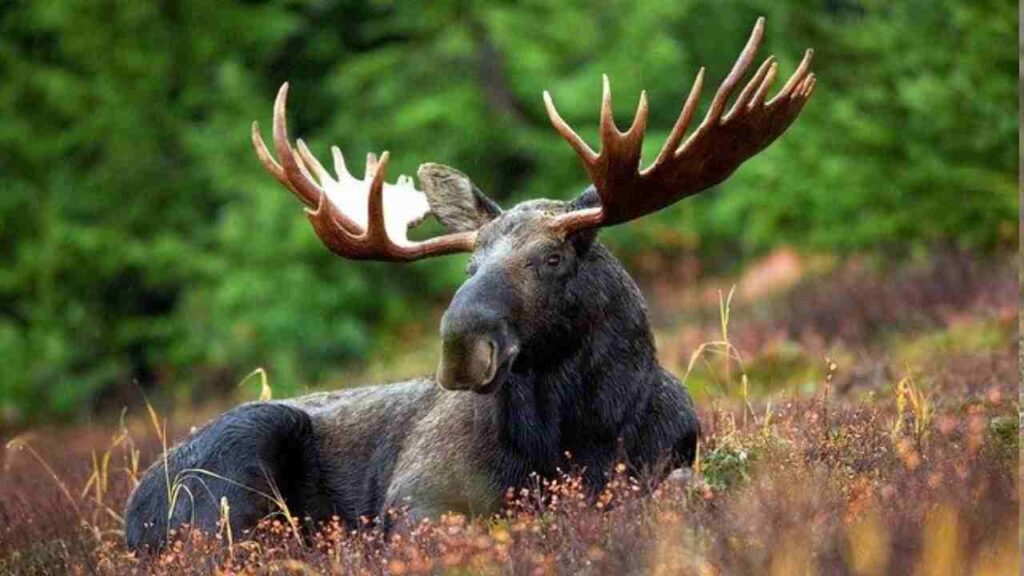
You wouldn’t assume that a moose is a dangerous animal, but that line of thinking of foolhardy.
Moose can be docile creatures, but just as easily, they can turn aggressive, especially if you behave wrong around one or if the creature is tired or hungry.
With those large, ornate horns, you could be gored or thrown, and the sizable moose, if it charges, can cause egregious bodily harm.
You should be wary of moose just as much as you are any of the other dangerous creatures in Yellowstone that I’ve discussed to this point.
How Plentiful Are They at Yellowstone?
There aren’t too many moose throughout Yellowstone.
The NPS predicts that, according to 2020 data, there are somewhere between 149 and 168 moose in the park, especially in the northern area.
What to Do If You See One
You’ve spotted a moose, and more so, the moose has spotted you. You might not feel as much fear striking your heart as if you were seeing a cougar or a grizzly bear, but as I said before, you need to be cautious.
Begin talking to the moose. In this instance, you want the moose to be fully aware of your presence.
Do not yell at the moose, but just begin talking in your normal tone and pitch. Then, while you keep talking, back away from the moose by walking backward.
There’s no need to maintain eye contact with the moose, but you should keep your eyes on it to make sure the animal doesn’t charge.
If the moose does charge, then find something solid that can take the brunt of the impact such as a tree.
If you can hide inside a nearby building or a vehicle, then those are good backup options.
Should you get knocked down by a moose, do not try to get back up again. Instead, curl your body tightly into the fetal position and keep your head tucked.
Then, just lie there.
The moose will eventually retreat, and you can then stand up and make your way back to safety.
6. American Bison
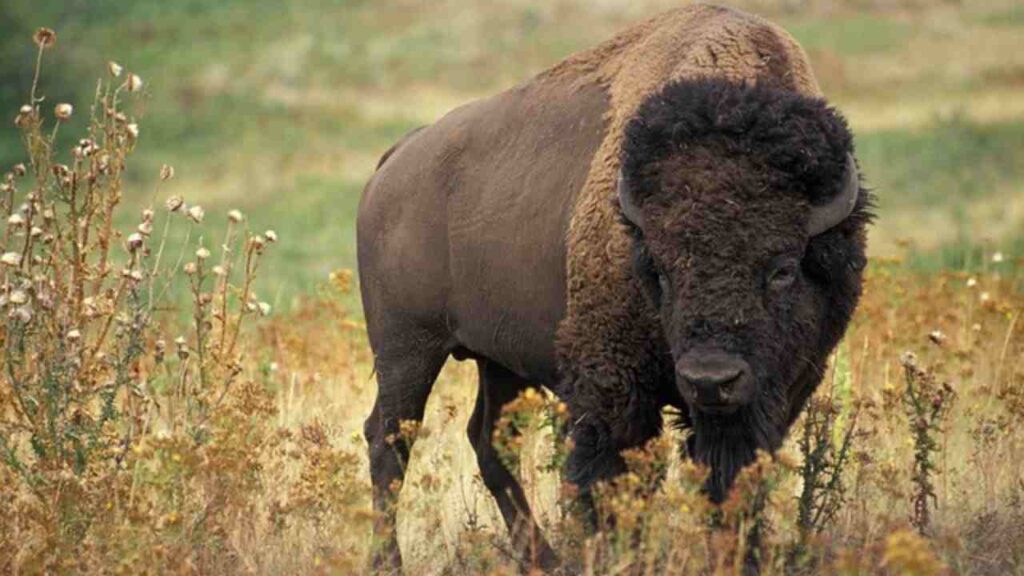
The last dangerous animal living in Yellowstone National Park is the American bison.
According to Yellowstone resource Cowboy State Daily, from 1995 to 2013, an average of five bison were encountered by people every year.
Bison are known to attack tourists in Yellowstone, so these encounters don’t often end well.
American bison are huge animals, weighing 1,200 to 2,200 pounds and standing 9.3 feet tall. You do not want to get charged by one just the same way you wouldn’t want to get charged by a moose.
How Plentiful Are They at Yellowstone?
Making matters even worse is that American bison are copious in Yellowstone. The NPS states that between 2,300 and 5,500 bison live throughout the park.
Some prefer the Hayden Valley in the central part of the park and others like the Lamar Valley up north as well as the plateaus there.
What to Do If You See One
What makes a bison attack?
Bison lack awareness (they are wild animals, after all) and don’t like the extra people that Yellowstone continually attracts.
People will also make the foolish mistake of trying to photograph themselves with an American bison for social media clout.
If you spot a bison and it continues doing what it was doing, then it probably didn’t see you. You can keep moving but slowly.
However, when the bison stops and looks at you, then it’s spotted you. At that point, should begin backing away while still watching the animal.
Continue backing away until you get to a safe spot.
Conclusion
Yellowstone National Park is the home to many extraordinary species. It just so happens that some of them are trying to kill you or at least maul you.
If you respect animals and don’t get too close, then you can avoid a potentially deadly encounter!
